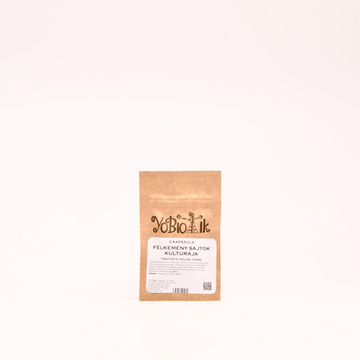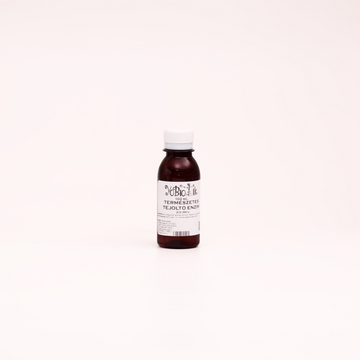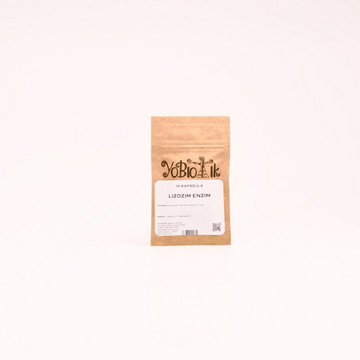Trappist monks perfected his recipe at the monastery of Port du Salut, France.The treasured technology was able to remain secret, not leaving the walls of the monasteries of the Trappist friars. In the 1880s, a method of making cheese resembling the original Trappist (Port Salut) was brought to Hungary from a monastery called "Star of Mary" near Banjaluka. Here, too, Trappist monks made their cheeses to a similarly high standard. They were popular cheeses in the Austro-Hungarian monarchy. It was made in discs measuring 5×15 and 6×22 cm, called "Fromage de la Trappe". The full inscription of the cheese reads: "Formage de la trappe, renommé par sa qualité supérieure Banjaluka"The similarity is obvious, but the Hungarian Trappist is not the same as Port Salut cheeses made by Trappist monks because they did not know the exact method of preparation.
All Trappists are (should be!) characterized by a slightly yellowish, pleasant-tasting, mouth-melting, regular fermentation hole.
Would you have thought that the original Trappist had round fermentation holes the size of a pea grain? Make a home-made, delicious-tasting, nicely punched, matureable Trappist! The homemade Trappist can be used in many ways! It can be grated beautifully, baked crispy on everything. I usually make it with 40-50 liters of milk so that we have at least 5 rolls of cheese that we can use continuously in our kitchen. Plus, it's always a unique gift. :) Trappist in the world: in Alsaxon: Formage de la Trappe (protected), in Canada: Oka cheese, in France: Port Salut, Port Du Salut (protected)
Trappist cheese recipe:
INGREDIENTS:
- 1 capsule of Semi-hard cheese culture
- 1 capsule of lysozyme enzyme
- 2.4 ml natural rennet enzyme
- iodine and additive-free salt
Order all ingredients and tools in one package with a discount by clicking here!
PREPARATION:
It is very important to work with fresh milk from a trusted source!
I always work from the morning milking, using the milk intended for Trappist cheese fresh and raw. If you decide to heat treat, heat the milk to 63-65 °C and maintain this temperature for 30 minutes. To maintain the temperature, it is easiest to use a water bath. Then cool to 32 °C in a cold water bath.
To measure the temperature, use a kitchen thermometer
1. CULTURE:
I rinse a larger pot with cold water. I pour in the milk and start heating it to 32 °C. I dissolve the lysozyme enzyme (10 litres / 1 capsule) and mix this with the cold milk to prevent butyric acid bloating during ripening, which results in an unpleasant taste and smell. A few times I stir it over and monitor the temperature to make sure I don't overheat. Because it can easily happen.
Meanwhile, I take the culture out of the fridge, pour the bacteria out of the capsule and dissolve it in a little lukewarm water. (counting 1 capsule per 10 litres of milk) I pour the well-dissolved culture into the milk. I ripen the milk for 10-15 minutes in a covered pot. It is important that the milk does not cool down during this time, because only then will bacteria multiply well.
2. INOCULATION OF MILK:
When the maturation period has passed, I mix 2.4 ml (per 10 litres of milk) of natural rennet in the milk. The milk is still 32 °C. I cover the pot to reduce heat loss during clotting. In this case, the milk must no longer be stirred, heated or moved! Liquid milk slowly turns into a solid curd. 40-45 minutes of clotting time follows.
3. CUTTING OF CURDS:
With my hands, I make sure that my clot is already firm enough. It is warm and soft at the same time, pleasant to the touch. If its separating well from the edge of the pot, it is good to go. I start cutting the clot with a harp. First, I pull the harp in the curd at a slower speed, and when I see the whey started to coming out from the curd, I start to speed up the speed of the cut a little so that the nuggets break as little as possible. If we cut it very quickly, or maybe break it, we will lose a lot of protein during cutting, a lot of protein will get into the whey. I cut the clot to 6-7 mm in 8-10 minutes.
4. POST-HEATING:
When I'm done cutting, I start reheating right away. I heat it to 42 °C while stirring constantly, so that the temperature rises by 2-3 degrees in 5 minutes. Care must be taken to ensure that the curd grains do not clump together during heating, I use curd whisker for that.
5. POST-PRESSING:
When I reach 42 °C, I turn off the heating and stir for another 10-15 minutes. In this case, the curd grains continue to solidify.
6. SEDIMENTATION:
Now comes some rest!
I cover the pot and 10 minutes of sedimentation follow. The curd collects at the bottom of the vessel and whey at the top.
7. PRESSING UNDER WHEY:
I remove 1/3 of the collected whey. I insert a perforated sheet the same diameter as my pot. On the perforated sheet, I put as much weight as 10-15% of the amount of milk weights. I press the curd grains down to the bottom of the dish, pressing them until completely solid in 10 minutes. For 10 litres of milk, I calculate 1-1.5 kg of weight.
If you don't have a stainless steel weight, you can put the weight on it by placing a height in the middle of the press plate, on which you can put the weight above the surface of the whey. put a tall cheese mould on it, or a tall smaller pot, etc...
8. FORMATTING:
I put wet cheesecloths on the cheese moulds and toss them into the warm whey pot so that the moulds also heat through.
When the pressing time is over, I take off the weight and the perforated press plate. The cheese disc assembled at the bottom of the dish is already easy to work with. I cut the disc into pieces large enough to arrange it comfortably in cheese moulds. In this case, the cheese matter is still very malleable, so it can be arranged from several pieces within the mould, even stacked on top of each other. I do this in the pot in the warm whey as soon as possible to avoid over-cooling.
9. PRESSING:
When my mould is full, I lift the cheese out from the whey, put the follower on it and press it with a weight equal to the weight of the cheese. 10 litres of milk, 1 kg of cheese, 1 kg of weight. After 10 minutes, flipping begins. I take the cheese out of the mould, turn it over, put it back into the mould, but I am very careful that the cheesecloth does not wrinkle. I increase the weight to double the weight of the cheese. The next flipping will be in 20 minutes, at which point the weight is already 5x the weight of the cheese. After 30 minutes, I turn one over again and increase the weight to 10x. After that, the rotation time becomes less frequent (60-120...), the weight remains 10x. Total duration of pressing: 6-8 hours at 22-24 °C. Temperature is very important for bacteria to function!
10. SALTING:I
I make a 20% saline solution. For 20 dkg of iodine-free salt, I pour enough water so that the solution totals 1 kg. The temperature of the solution is 15-16 °C.I soak it in the salt bath for 12-14 hours per kilogram of cheese. I'll flip it over at halftime.
11. RIPENING:
When the salting time has passed, I remove the cheeses from the salt bath. I use paper towels to drain moisture from the surface of the cheese and put it on an untreated wood board. I let it dry for 2-3 days. I turn it over every day. Then I make a 5% brine and wipe all sides of the cheese with this solution every day, then wipe dry, turn it over and wipe the board dry as well. I wipe it with saline every day for the first week, then from the second week, only every 3-4 days. But spinning, I spin cheese every day! This is how I mature for 3-4 weeks in 15-16 °C and 85-90% humidity. If the cheese dries too quickly because the humidity in the air is low, I use cheese coating wax. I spread it in two layer to protect it from drying out so that the cheese does not have a thick crust. In this case, there is no need to wipe with the 5% brine, but it is still necessary to rotate it.
GOOD TO KNOW!
Whey contains large amounts of "cheese-making" bacteria and enzymes. It provides an ideal warm environment for the fast ripening of cheese dough. Bacteria multiply rapidly in cheese pressed under whey. A delicate pressure causes whey to leak out evenly through the whey channels formed between the nuggets, while at the same time the cheese dough retains its ductility. The malleable, evenly structured cheese dough closes slowly due to rotations and the continuous increase of press force. In the cheese made in this way, all conditions are provided so that the carbon dioxide bubbles formed at the first stage of ripening form gas holes. They are characterized by a beautiful texture, characterful, clean smell and taste. You can make the right diameter sheet for pressing curds under whey from hardwood, but best from food grade plastic, perforated plate sheet.
 Lactic cultures
Lactic cultures
 Ingredients
Ingredients
 Cheese moulds
Cheese moulds
 Supplies
Supplies
 Kits
Kits






